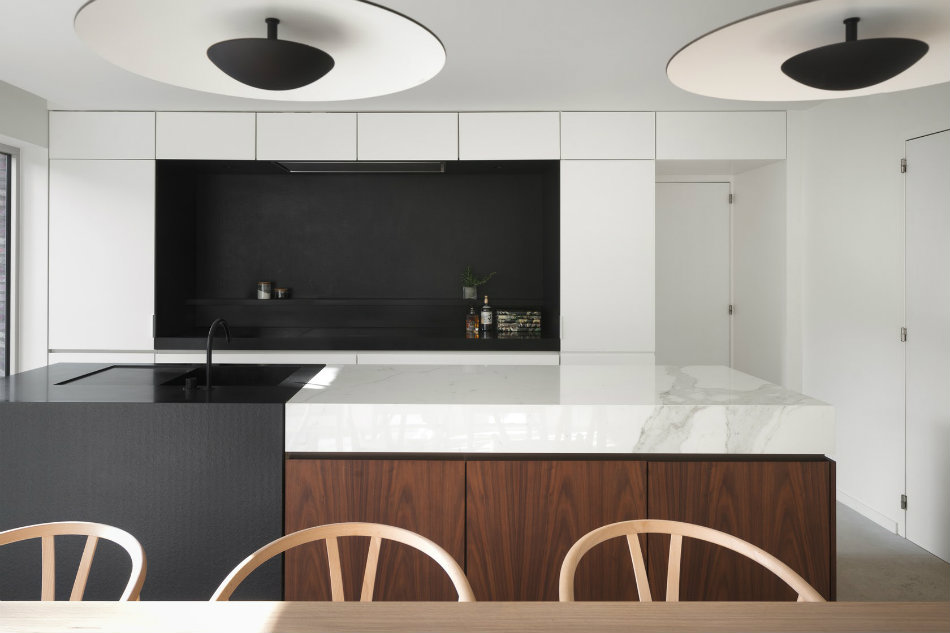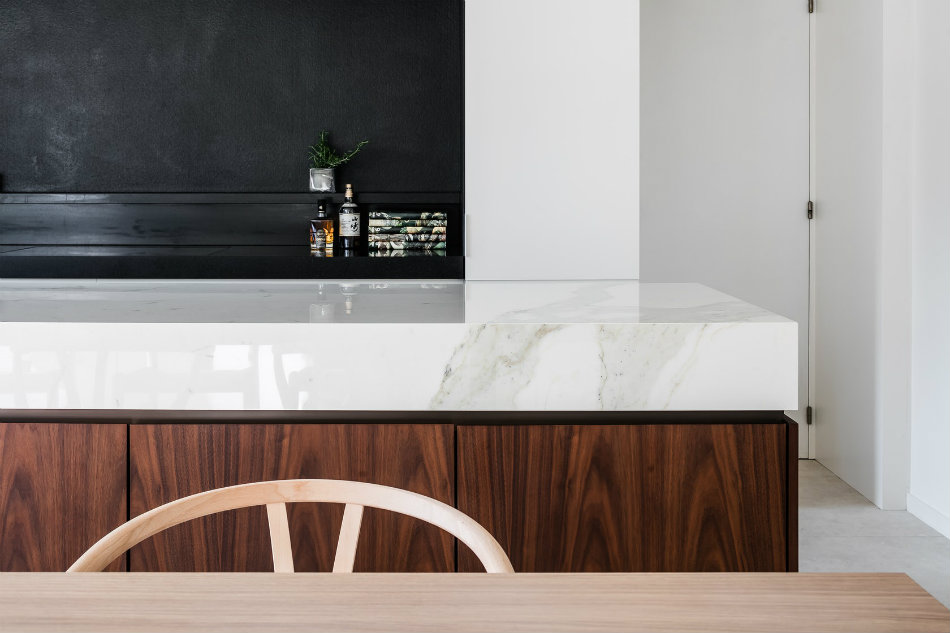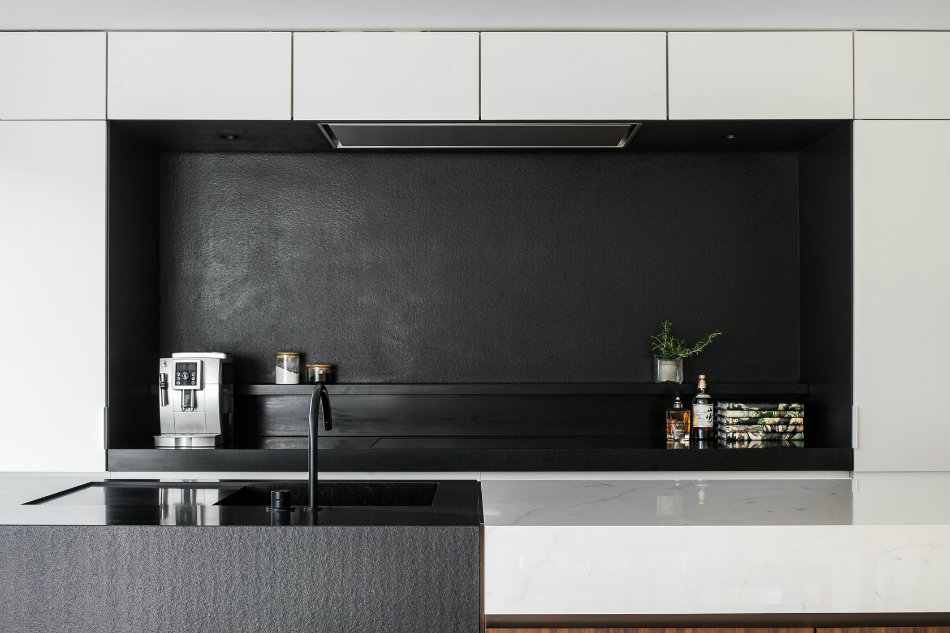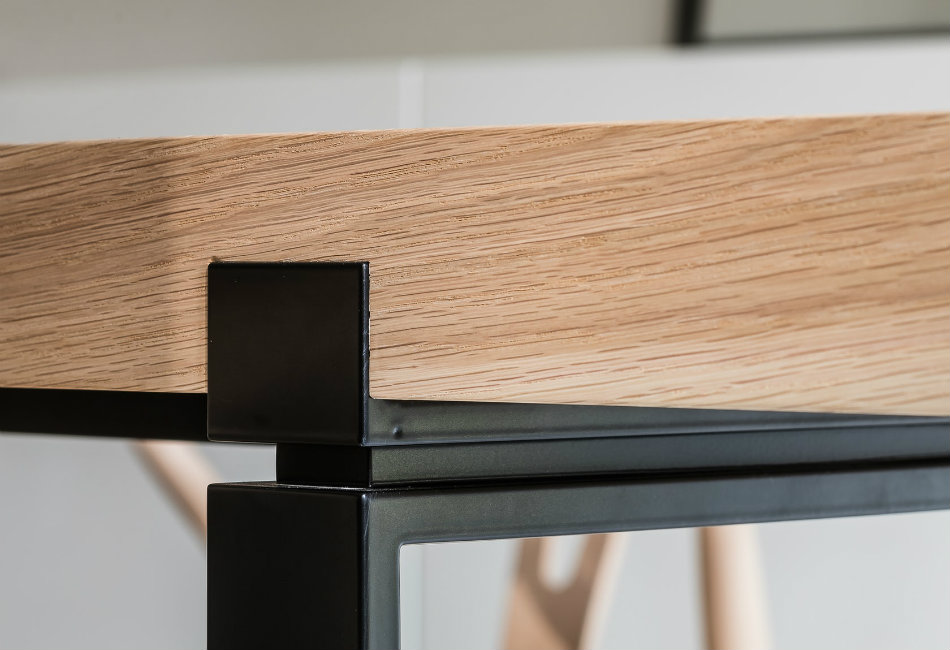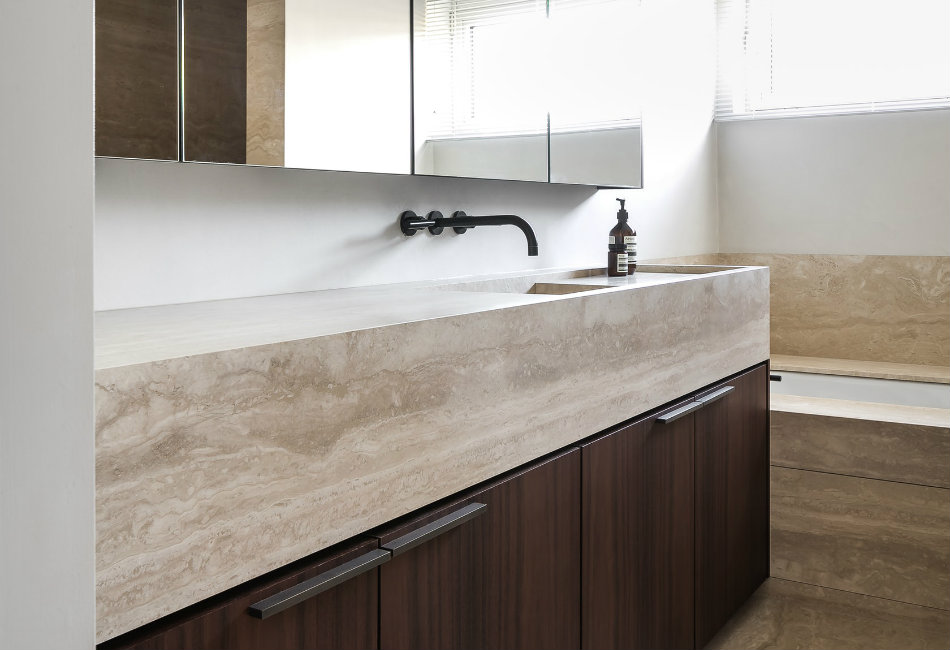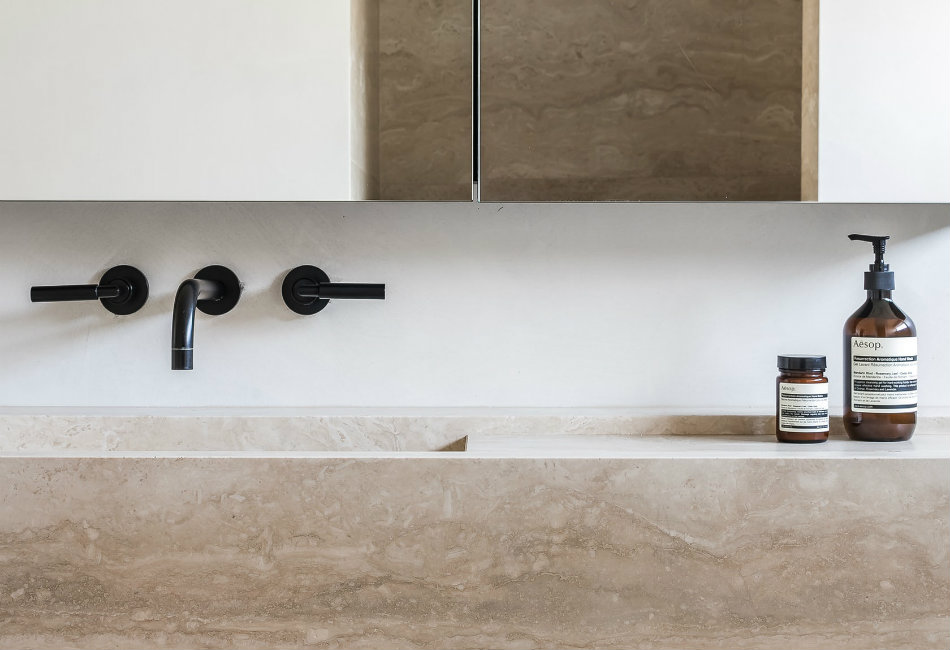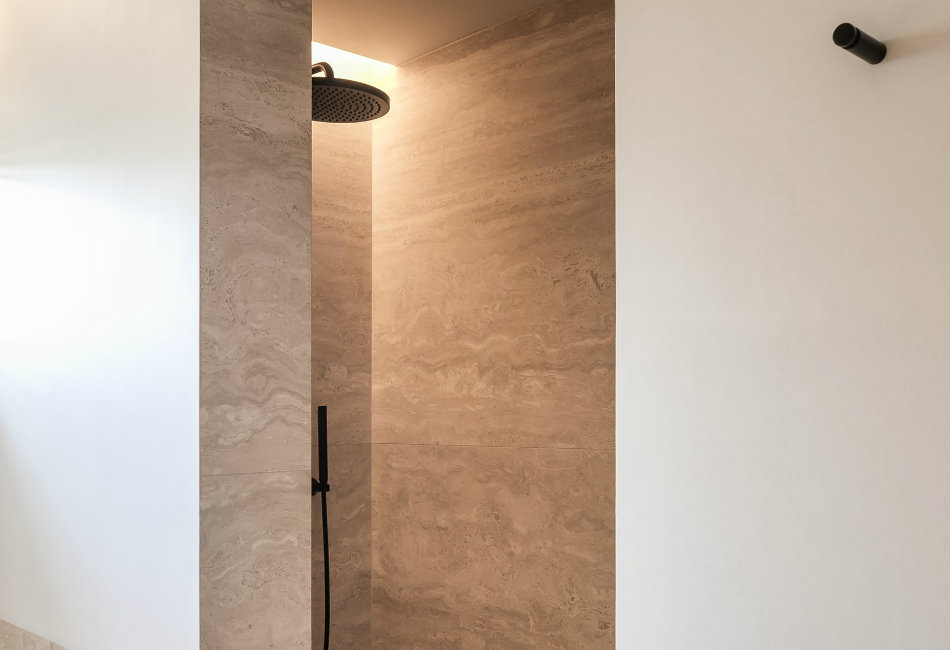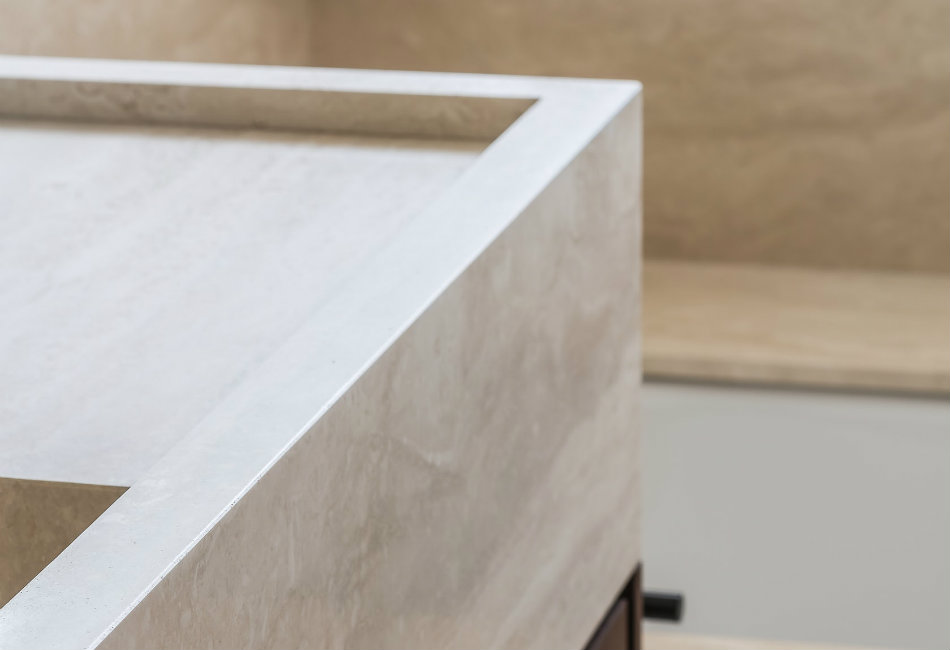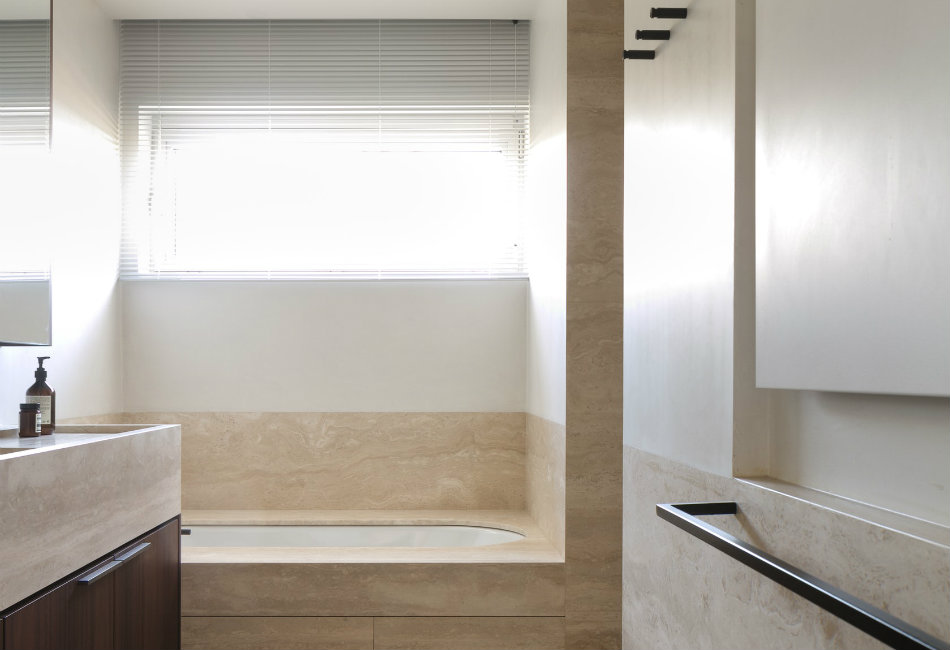The cooking niche is conceptualised as a black 'cutout' from the cupboard wall, featuring a cooking top in polished granite and a back splash in rough, hammered granite. The kitchen fan is integrated in the cupboards, as are all the other appliances, creating a very calm image. On the floor, big tiles of Pietra dei Medici stone, a cross-cut Travertine, are aligned with the island and the cupboards to create a very calm base.
The eye-catcher in the kitchen is the large island in the middle, where 5 different materials come together in a sculptural volume: black Zimbabwe granite, dark stained Walnut veneer, polished Calacatta marble, patinated bronze and the black lacquered Vola taps. The result is a very graphic composition. The dining table plays a more humble role, but was also custom designed by the architects. A solid Oak tabletop is perched on a custom made frame, lasercutted from 1cm thick black steel. The table is complemented by the timeless 'Wishbone' chairs, designed in 1949 by Danish designer Hans J. Wegner.
In the bathroom, a classic vein-cut Travertine stone takes the lead, cladding the walls of the shower (in large custom-cut slabs), as well as creating a plinth along the walls, aligned with the top of the sink. The sink itself is also completely cut from Travertine, incorporating even a stone sink hole detail. The material palette of the kitchen is continued in the bathroom in the Walnut veneer cabinetry and the black taps by Dornbracht. Mirror cabinets provide additional storage and conceal indirect LED lighting.
Above the 90cm line of the sink, the walls are covered in white Mortex, a cement-like, waterproof finish. In the cupboard door handles, the architects introduced another bronze accent. The space for the walk-in shower was carved out of an adjoining room, to create the necesarry space. The combination of a timeless material palette with strong, pure lines, creates a look of 'understated luxury', a trademark of the Belgium-based firm.















